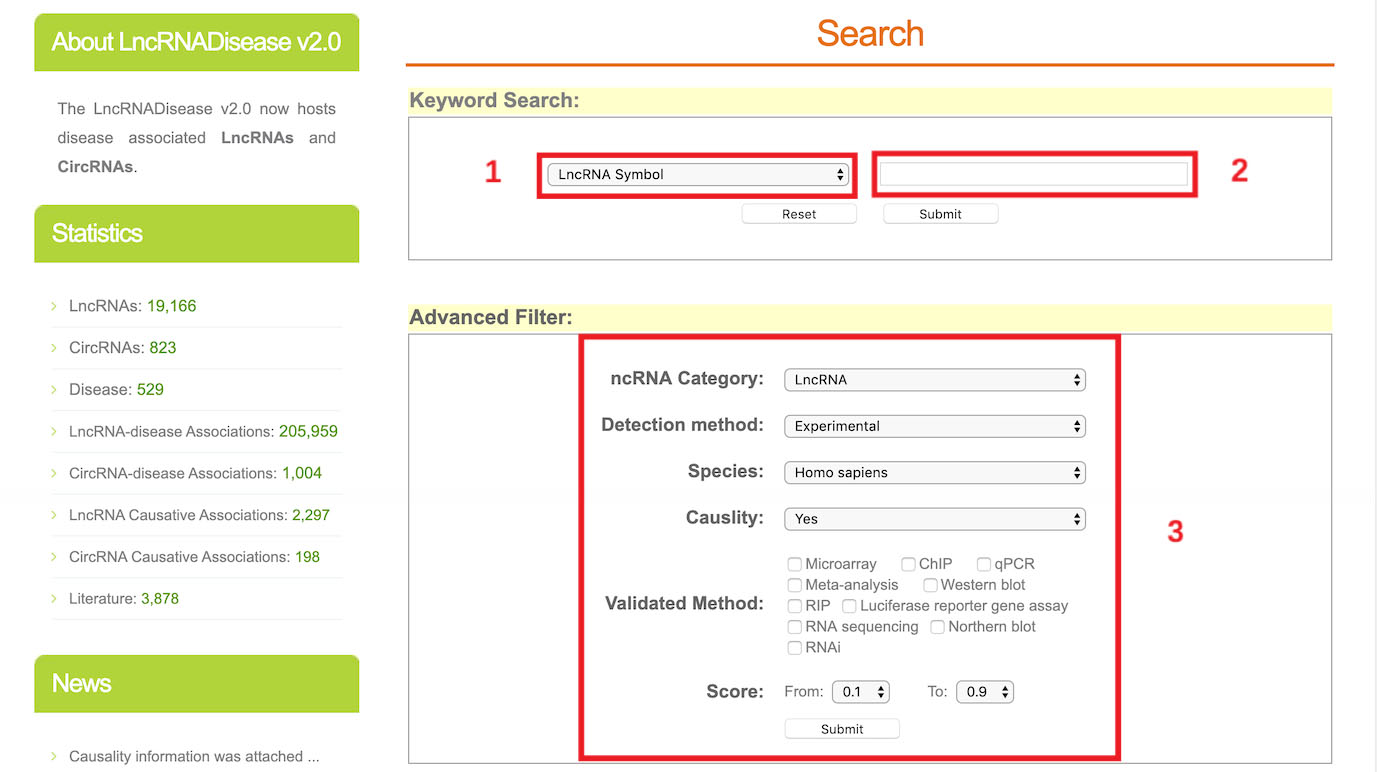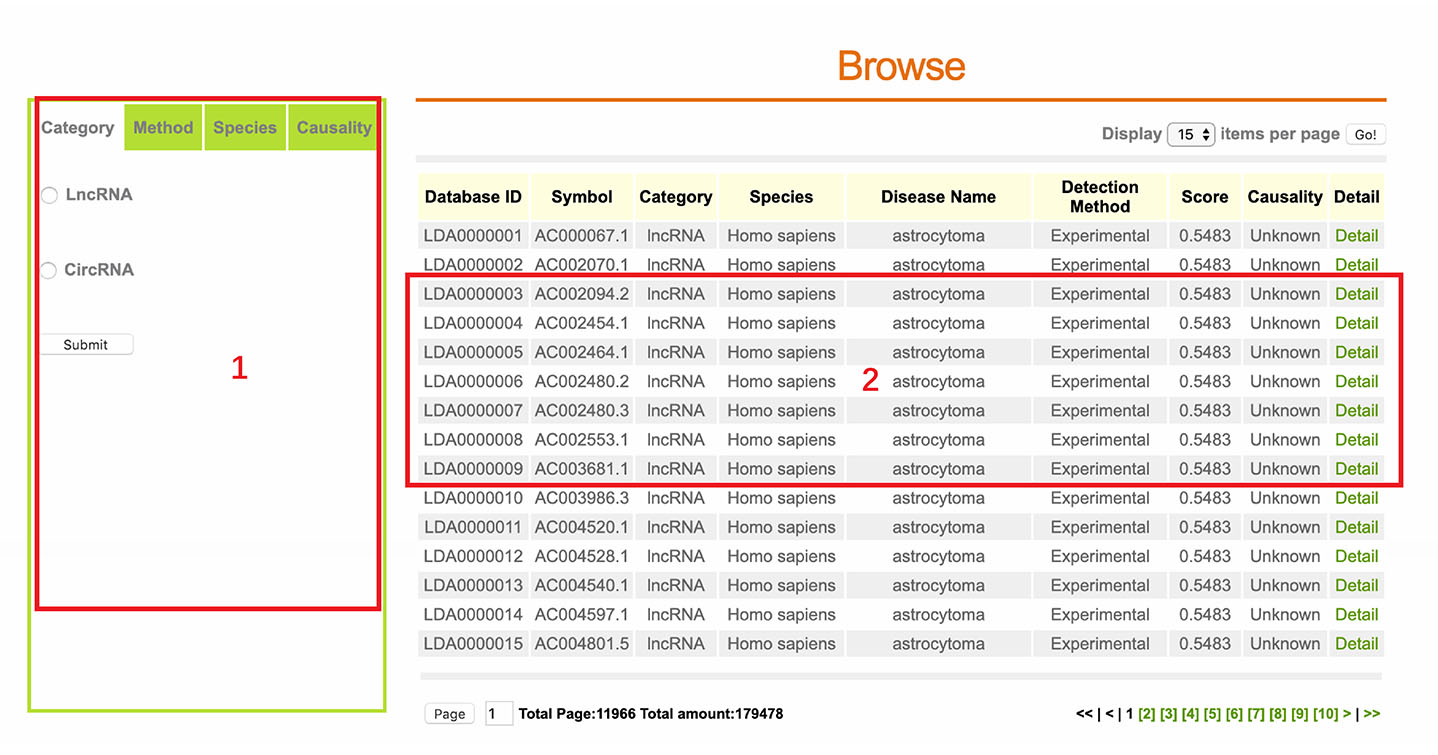Tutorial
The usage of LncRNADisease v2.0 database is as follows
- 1. Overview of LncRNADisease v2.0
- 2. Search Database
- 3. Search Result
- 4. Browse Database
- 5. Entry Detail
- 6. About Us
1. Overview of LncRNADisease v2.0
1. Main functions of the database are provided in the menu bar.
2. Main statistics of the database.
3. Updated news about the database.
4. Distribution of all experimental data in the database.
5. Database citation.

2. Search Database
The SEARCH page is displayed as follow
1. Select a category: Three choices are provided.
2. Input a keyword corresponding to the selected category.
3. Five categories provided to filter results.

① Use NCBI Gene/Disease Ontology/MeSH to normalize your input information.
② If you got no result or too few results, you may shorten your keywords.
3. Search Result
The Result page is displayed as follow.
In the Result page, all associations are listed with basic information including Symbol, Category, Species, Disease Name, Detection Method, Prediction Method and Score.
1. Total page and amount of results.
2. Click to turn the page.
3. Click to link to the Entry Detail page.
4. Click to download the search result.

4. Browse Database
The BROWSE page is displayed as follow.
Associations can be displayed selectively according to selected conditions.
1. Browse by different categories.
2. Database items.

5. Entry Detail
The Entry Detail page is displayed as follow.
In the Entry Detail page, you can get information including General Information, ncRNA Information, Regulatory Relationship, ncRNA Association Statistics, Disease Information, Disease Association Statistics, Evidence Support and Reference.
1. Click Ensembl ID, HGNC ID, Entrez Gene, VEGA ID, UCSC ID, ENA, RefSeq Asscession, UniProtKB to get more detailed information in external databases.
2. Click More Information to browse and download the basic information of all the associated diseases of this ncRNA.
3. Click More Information to browse all causal associations of this ncRNA.
4. Browse Disease Ontology ID/MeSH to get more detailed information in Disease Ontology/MeSH.
5. Click More Information to browse and download the basic information of all the associated ncRNAs of this disease.
6. Click More Information to browse all causal associations of this disease.
7. Click PubMed ID to get more detailed information in NCBI.

6. About Us
This database is hosted by Dong Lab, Shanghai Key Laboratory of Regulatory Biology, Institute of Biomedical Sciences, School of Life Sciences, East China Normal University
If you have any questions or suggestions about our database, please don’t hesitate to contact us.
Email: ddong.ecnu@gmail.com
Database Administrator: zhenyang@fudan.edu.cn